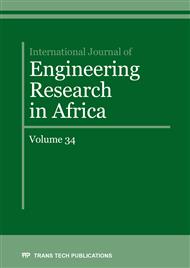p.1
p.5
p.13
p.29
p.40
p.48
p.59
p.70
p.81
Failure of Service Exposed Heat Resistant Cast Steel Tube
Abstract:
A heat resistant cast steel tube from an ammonia plant made of modified HP40 steel that failed after seven years of service was investigated for damage mechanism. The assessment of material degradation was carried out using optical microscopy, scanning electron microscopy (SEM) in combination with energy dispersive spectroscopy (EDS) analysis and mechanical tests. The main cause of failure appears to be overheating and localized corrosion along the network of intergranular carbides. Failed portion of the tube showed that the interdendritic eutectic carbides had coarsened, secondary carbides were precipitate and strongly coaresned within the austenitic regions. Witch decrease the mechanical strength and ductility of the service exposed tube compared with the as cast tube. Presence of unacceptable impurities like chlorine in the internal working gas destroy the protective oxide layer leading to penetration of corroding elements and degradation of service life of the tube.
Info:
Periodical:
Pages:
1-4
Citation:
Online since:
January 2018
Authors:
Price:
Сopyright:
© 2018 Trans Tech Publications Ltd. All Rights Reserved
Share:
Citation:


